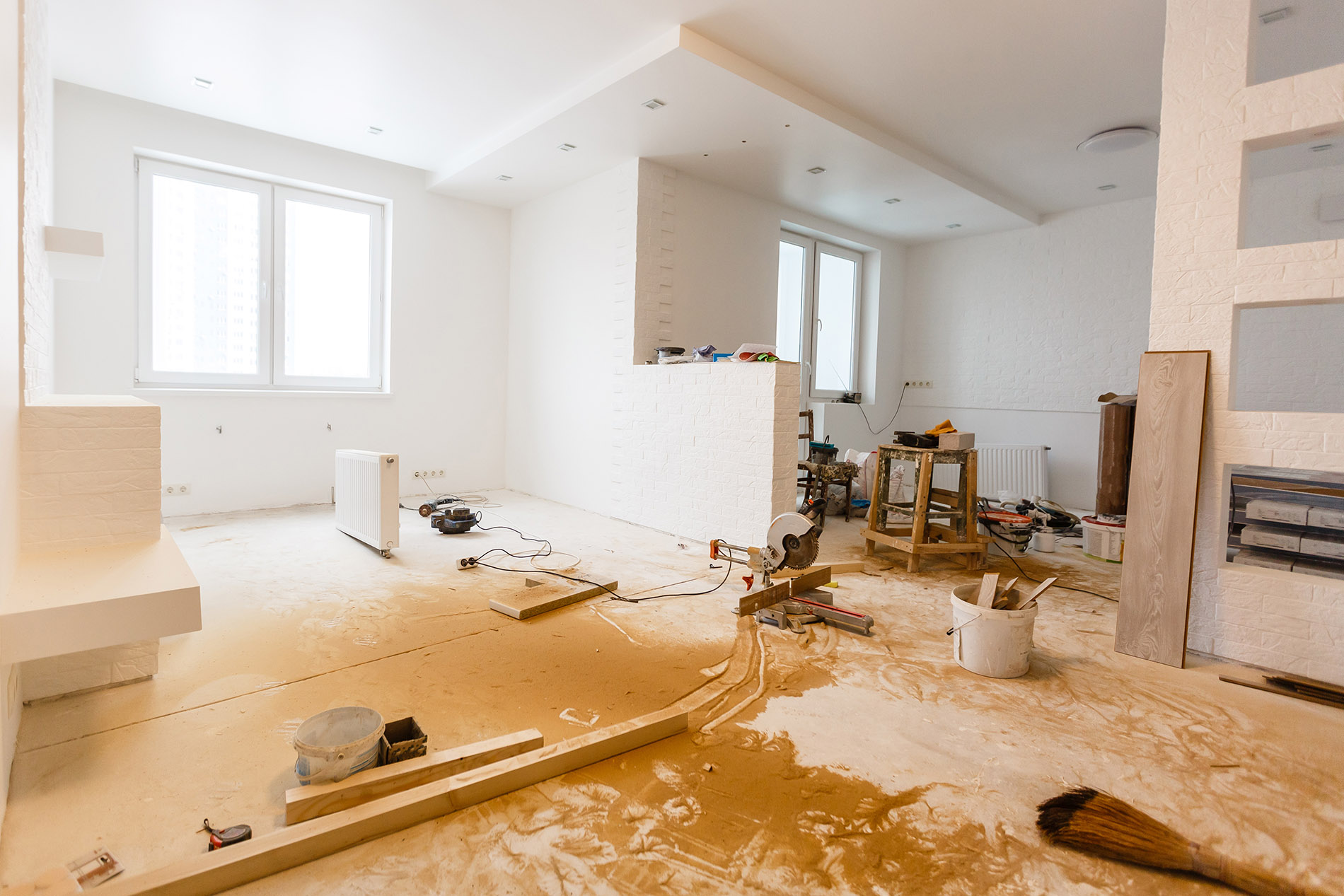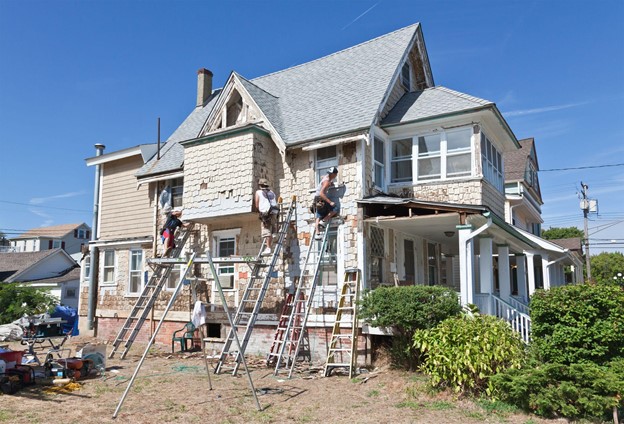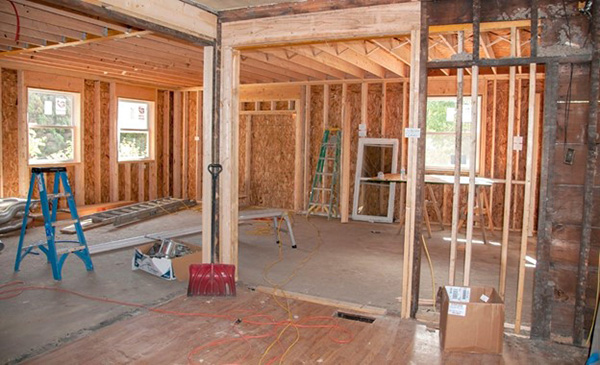Your home is likely your most valuable asset, whether you bought it new or pre-owned. Over time, though, that asset becomes outdated, leading people to either buy a new home, buy a newer used home, or remodel their existing home.
Remodeling your existing home can not only be a satisfying journey, but it can also save you money on moving costs and, when done correctly, make your home more environmentally friendly. This trend, known as green remodeling or environmental remodeling, takes an older, outdated home and brings it up to the latest eco-friendly standards.
How does environmental remodeling work? Learn all about it below.
What Is Green Remodeling?
Green remodeling — also called environmental remodeling — is when you take into account the environmental impact when remodeling a home. Older homes built when energy efficiency standards were lower often offer enormous opportunities for green remodeling.
And because remodeling a home impacts the environment in many ways, you can participate in the environmental construction wave in numerous ways while updating an older home.
The steps you can take to achieve a green remodel include the ways you source materials, the types of materials you use, and the design of the remodel itself. With all these opportunities to handle your remodel in an ecofriendly way, you may be wondering where to start.
How Do You Remodel Eco-Friendly?
When you decide to take on a home remodeling project and do so in an eco-friendly manner, you can do so in many ways. Let’s review all the environmental remodeling opportunities, from green building methods to sustainable building materials and beyond.
Choose a Green General Contractor
Unless you’re a handy do-it-yourselfer, most homeowners depend on general contractors to tackle their green home improvement projects. Certifications are relatively common in general contracting, including those in green building methods.
Look for a general contractor with one or more green building certifications, such as a Green Certified Professional certificate from the National Association of Home Builders or the National Association of the Remodeling Industry or a Professional Credential from Leadership in Energy and Environmental Design (LEED).
These certificates are only pieces of paper, but they demonstrate a dedication to environmental construction. However, the real proof is in the remodeling contractor’s work and the subcontractors they hire.
Start Your Environmental Remodel From the Design Phase
While the building phase is a huge part of environmental construction, it is still only one part. Another big part is the passive environmental remodeling that can occur during the design phase.
This can include skylight placement to maximize natural lighting, limit energy use, and lower energy bills. It also encompasses heating, ventilation, and cooling duct routing, outlet placement, and window placement for maximum sunlight and natural heat in the winter.
It’s not only the interior design and building design that matters — landscaping design can also impact your green remodeling project. Tree placement, in particular, makes a big difference.
Choosing trees with optimal shade creation in the summer and placing them in the right place can significantly lower your cooling costs in the summer. And choosing trees that also shed their leaves in the fall and winter can maximize lighting and natural heat in your home, further reducing energy costs. This makes deciduous trees an excellent option for your green remodeling project.
Weaving the design process into your overall environmental remodeling goals can set your project up for maximum success.
Get an Energy Audit
On top of the design process, you can further prepare for your green remodeling project with an energy audit. These audits — also known as energy assessments — perform numerous tests to expose inefficiencies in your home. This can include measuring your furnace’s efficiency, checking for door seal and window seal leaks, performing thermographic scans of your home, and much more.
After the energy audit, you’ll have a clearer picture of what needs updating to maximize your home’s efficiency after your environmental remodeling.
Use Sustainable Materials
Another way to execute an environmental construction job is to use sustainable materials. These are building materials made from renewable sources or that are from sources that are sustainably harvested. This can include green cabinets for your kitchen remodel, composite boards — made from materials like recycled plastics — for your new deck, bathroom fixtures, or even recycled insulation.
You can also ensure your environmental remodeling project is completed in the most sustainable way possible by deconstructing instead of destroying materials. It may be satisfying to dive in with a sledgehammer and tear down all the old materials, but you could be destroying materials you can reuse. Instead, methodically deconstruct the old items and find anything reusable, such as wood beams, fixtures, and more.
If you can reuse nothing in your home, this doesn’t mean you have to buy all new materials. You can ensure sustainability by reusing high-quality items you can source locally from other people’s renovations or reuse stores, such as Habitat for Humanity’s chain of ReStores. You can also find reusable items to fit a specific theme you’re targeting.
For example, if you want a rustic-themed living room for your green home renovation, you might consider wood from a razed barn or driftwood. These can be quality materials and offer great alternatives to buying new wood and artificially aging it.
Upgrade Your Appliances and Utilities
Old houses generally have outdated appliances and utilities, including water heaters, refrigerators, stoves, dishwashers, air conditioning, heating, and more. These old appliances are typically relatively inefficient and can impede green remodeling.
So, if your environmental construction project has aging appliances and utilities, consider upgrading them to new, more efficient ones. One example would be replacing your old tank-storage water heater with a more efficient tankless water heater.
The U.S. Department of Energy found tankless water heaters are 24-34% more efficient than tank-storage heaters in homes using 41 gallons of water or less daily. However, in those using up to 86 gallons of water daily, these tanks are still 8-14% more efficient. Plus, you can install a heater at each outlet and save even more.
You can also opt for a solar water heater, which uses no electricity and can reduce water heating-related electricity bills by 50-80%. And if you really want to go green in your renovation, consider renewable energy by retrofitting the home with solar panels.
While the initial investment may be high, the long-term payoff to the environment and your wallet can be well worth it. Of course, your savings can vary with solar panels, depending on sun exposure, electricity rates, solar system size, roof design, and even your electric company’s billing methods. So, verify all these before committing to a rooftop solar panel system.
Use Upgraded Building Materials
Like the appliances and utilities in your home, the building materials you use can significantly improve the success of your environmental remodeling project. While removing old building materials, consider upgrading to new, more efficient options. These can include:
- Low-emissive (Low-E) glass windows: These windows have a microscopic film coating that reduces heat transfer. This can reduce energy loss by 30-50%. Plus, you can have them custom designed to limit the sunlight they let through. You can purchase all-new Low-E windows or add a Low-E coating to existing ones.
- Low-flow toilets: When low-flow toilets were made a law in 1994, the 1.6-gallon-per-flush limit often led to multiple flushes to work correctly. However, these toilets now function as expected with new flushing technology and redesigned passageways. According to the Environmental Protection Agency (EPA), replacing old toilets with new low-flow options can reduce water consumption by 20-60% and save you $140 per year.
- Low-flow fixtures: In addition to low-flow toilets, you can integrate other low-flow water fixtures in your environmental remodeling project, such as showerheads and faucets. These not only reduce water consumption, but they also reduce water heating costs and lower your utility bills. Low-flow faucets can reduce consumption by 30% or more, and low-flow showerheads can lower consumption by 20%.
- New Insulation: You should replace or retrofit your home with new insulation once every 15-20 years for optimal efficiency, depending on the R-rating — the insulation’s resistance to heat and cold. If your green remodeling project is a 15- to 20-year-old (or older) home, consider replacing the insulation and dramatically improving the home’s efficiency.
Buy Locally
A portion of the carbon footprint of a home remodel is in transporting materials. Fortunately, you can limit this by buying as many home construction materials as possible locally. From your countertops for your bathroom remodel to the lumber, you can source these materials nearby and eliminate the emissions created when shipping home building materials long distances.
On top of saving the emissions, you are also helping support the local economy, so it’s a win on all sides.
What Should Be Kept in Mind When Renovating?
You’ll want to keep several things in mind when performing a green remodeling project. Let’s review a few of the more important and oft-forgotten parts of an environmental remodeling project.
Get Your Green Credits
Many of the upgrades you make in your green remodeling project may also have federal, state, or local credits available. For example, installing a low-flow toilet can net you credits on your utility bill or credit check mailed to you, and all solar panel installs through 2032 are eligible for up to a 30% tax credit.
This can help offset some extra costs associated with a green remodeling project.
Find Free Options
Reclamation and reuse are great ways to make your environmental remodeling project more cost-effective. When people offer these reclamation items, such as wood from an old barn or old lumber from a disassembled garage, they simply want the scrap wood gone. This is an excellent opportunity to get these materials for free.
For example, see if you have a neighbor tearing down an old building with suitable reusable materials. In that case, you might be able to entice them to offer the old materials to you for free by volunteering to help with the teardown.
Cleanup Matters
While focusing on environmental health during construction matters greatly, don’t forget about the cleanup. Verify how your contractor plans to clean up your site and ensure it aligns with the green construction process so that the entire process is eco-friendly.
No matter how green the process is, hazardous materials that can harm wildlife and human health, such as asbestos and more, may still be present. And you’ll want to ensure it’s being disposed of in environmentally safe ways and not just getting dumped in a landfill or left to leach into the groundwater.
Is It Better for the Environment to Build New or Renovate?
Research shows that renovation is better for the environment than a new build, and this is only compounded when you’re committed to an environmental remodeling project. This is because of the greenhouse gasses released during the materials’ lifecycle, including everything from extracting the raw materials from the Earth to transporting them to the physical construction process.
If you’re remodeling instead of building new, far fewer net-new raw materials will go into the project. This is even more significant in the case of a green remodeling project that focuses on reusing and reclaiming materials.
Also, if you’re replacing old water fixtures, like toilets, showerheads, and faucets, with new low-flow options, you’re limiting your consumption and retiring a high-consumption fixture. This means a net reduction in overall consumption by the renovated home. In contrast, a new home is an overall increase in consumption, albeit at a lower rate than an older home without upgrades.
Your Environmental Remodeling Project Can Make a Big Impact
When you take on a remodeling project, you have the potential to increase your property value and the property values in the surrounding area. Add the fact that you’re doing an environmental remodeling project, and the benefits are multiplied.
You and your neighbors enjoy improved values, and you can feel good knowing your renovations made this old home more environmentally friendly.
Want to reduce your carbon footprint further and help slow climate change? Consider purchasing carbon removal credits from Terrapass. We offer carbon reduction credits to offset all types of activity, from travel to weddings.
Brought to you by terrapass.com











